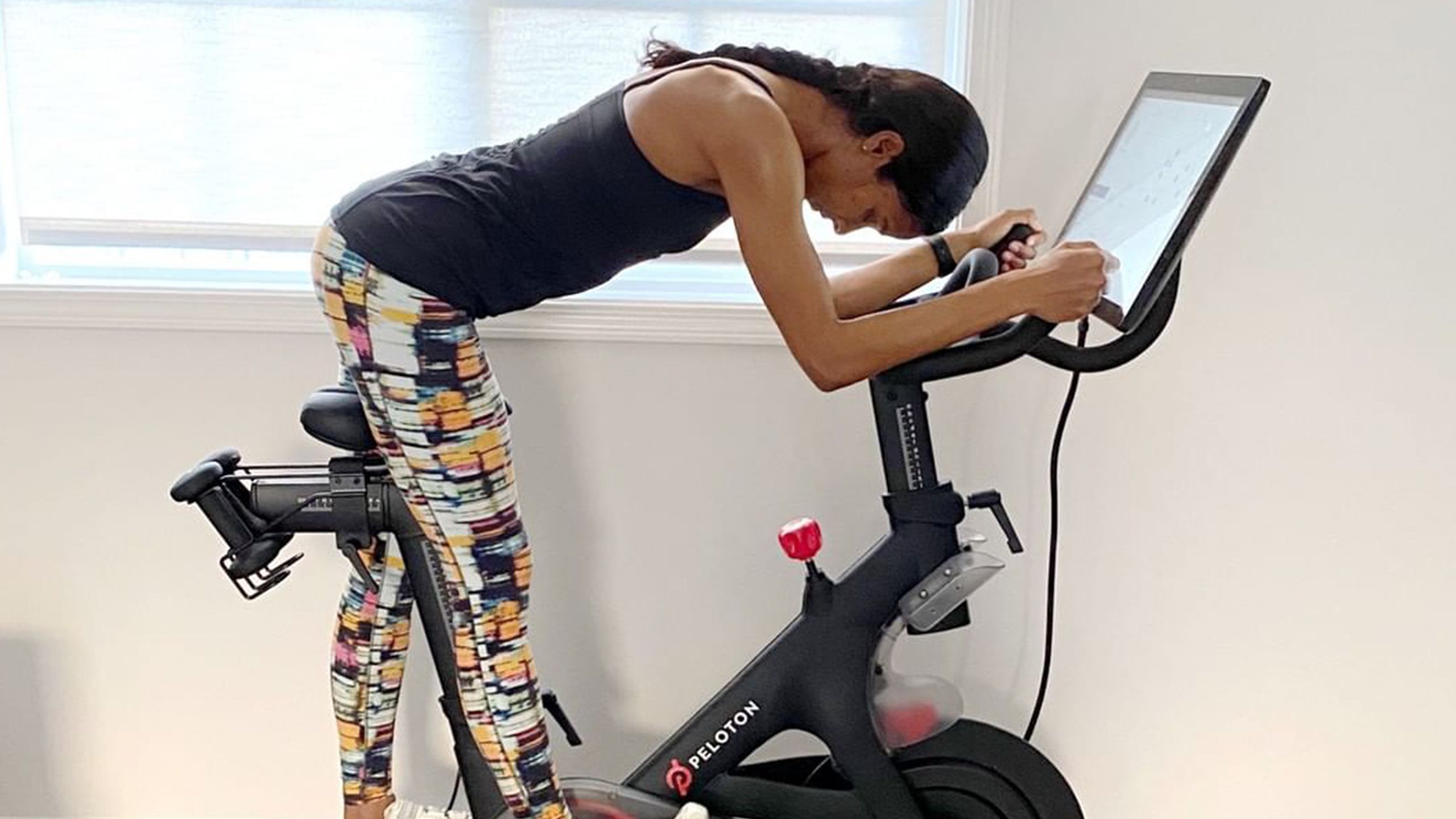I’ve been running since I was a teen—but a couple years ago, my calf started bothering me. It soon became clear that I’d need to take a break so my body could rest and repair properly.
At first I was anxious. I’d worked hard to get in shape and I worried all that effort would be lost if I wasn’t staying active. Luckily, my recovery journey led me to Peloton and before long, I was a regular in low impact cycling classes. Those workouts were so much fun, taking my mind off my sore calf. And, it turns out, they may have also helped my body get better faster.
“Tissue actually heals with movement,” says Kelly Roberts Lane, DPT, of Fix It Physical Therapy in Vadnais Heights, Minnesota. “If you decide to not move after an injury, healing will be delayed, your conditioning will plummet, and your muscles will atrophy.”
If you’re struggling with an injury, this expert advice will help you stay active and healthy, even though you’re not at full strength. Talk to your doctor about what they recommend for you—and then get moving.
Set realistic goals
First things first: You’re probably going to have to scale back the duration and intensity of our workouts, so tap that Leaderboard aside for now. “The saying ‘no pain, no gain’ is not true post-injury,” says Lane. She usually recommends dropping your exercise routine down to about 50 percent of what it used to be, so you’re getting an “active rest,” which helps the tissue rebuild without causing any new damage. Once you start feeling stronger, you’ll want to talk to your doctor or physical therapist about how to ramp up your sweat sessions from there.
Don’t shy away from cardio
As you’re recovering, it’s important to do low-impact activities that keep your heart rate up, Lane says. Biking and swimming are both good options. The cardio will aid your healing process—and post-workout endorphins will help lift your spirits too.
That approach worked wonders for Courtney W. of Long Island, New York. After a knee replacement, she hopped on a Peloton Bike on the recommendation of her doctor. At first, Courtney found herself wanting to cry; her legs got tired within seconds and she had to stay seated in the saddle. But she stuck with it, and soon enough, she was increasing her resistance and standing for long periods of time. “It was the best rehab any money could buy,” she says.
Explore all your options
Take advantage of all your Peloton Membership has to offer, including on the app. Check out the yoga, stretching, and strength workout options for other ways to keep your body engaged during the recovery process. Classes can be as short as five minutes, and instructors offer plenty of modifications for moves, so you can stay pain-free throughout.
Consider a training program
If you’d like to be able to measure your progress, a program such as Power Zone Training can help make you feel accomplished, says Tom D. of Washington, D.C. “I connected with the difference between exercise and training, with the training allowing you to set goals and tangibly work toward them,” he says. To get started, visit the “Discover Your Power Zones” program on your Bike or in the Peloton App.
Care for your mental health
Even though you’re keeping the endorphins flowing, you might still feel sad or frustrated. If that’s the case, a meditation class might be just the emotional boost you need. In the Peloton App, you’ll find classes that promote healing, sleep, relaxation, and more.
And remember: It’s important to treat your body with kindness, no matter how long the recovery process takes. “Tissue takes time to heal,” Lane says. “Be patient with yourself.” You’ll be back at full strength before you know it.
